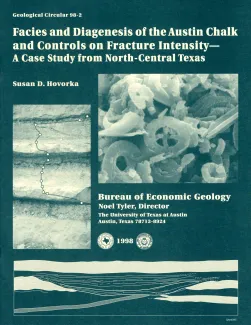
Publication Details
Geolocation:
Get the Publication
$10.00
Abstract/Description:
The urban corridors associated with the Dallas, Austin, and San Antonio metropolitan areas lie on Austin Chalk outcrop. In these areas of rapid urbanization, ground-water information is needed to resolve environmental issues. The Austin Chalk also produces hydrocarbons in the deep subsurface. Fluid migration in both oil-field and ground-water environments is strongly controlled by fractures. In each geologic setting, a conceptual model of fracture intensity is required to model or predict flow. Using geologic and engineering data collected during development of the U.S. Department of Energy's Superconducting Super Collider (SSC) in Ellis County, Texas, I document Austin Chalk depositional environments and diagenetic alterations and investigate the factors that have influenced fracture development. Key findings are: (1) the Austin Chalk is laterally and vertically relatively homogeneous, reflecting deposition in deep water on high-productivity, flooded, continental shelves during Late Cretaceous worldwide sea-level highstand; (2) although rhythmically interbedded chalk and marl record intermediate-frequency sedimentological variability, no lower-order cyclic patterns could be identified; (3) facies within the Austin Chalk defined by variations in character of the cycles record marine flooding, deepening, and shallowing; (4) sedimentary structures in excellent exposures in SSC excavations and tunnels provide evidence of sediment transport through channels during Austin Chalk deposition; (5) fracture intensity is low in the middle Austin Chalk as compared with that in the upper and lower Austin Chalk; and (6) ductility, porosity, and permeability are genetically linked to chalk microfabrics. These properties are controlled, not by depositional facies, but by diagenetic alteration of minor amounts of volcanic ash co-deposited with chalk.